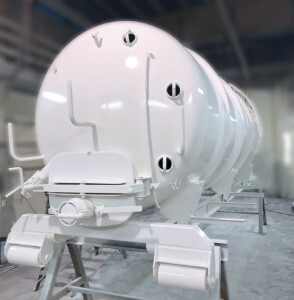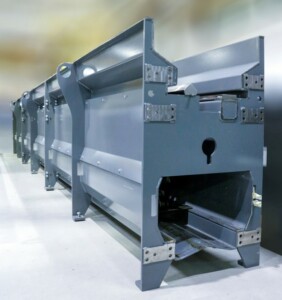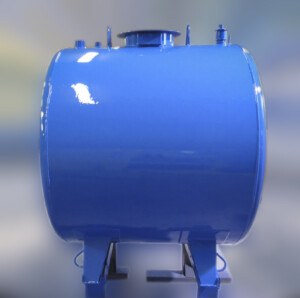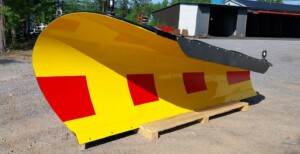15/8/2023
Traditionally, industrial painting systems have been implemented using a two-layer painting process. The primer provides corrosion resistance, while the topcoat delivers the desired appearance. However, the use of single-coat systems has gradually become more common when there’s a need to save on time and overall costs.
A traditional paint system usually includes a primer and a topcoat, or even multiple layers of primer/intermediate coat. According to the ISO 12944-5 corrosion protection standard, C3 corrosivity category paint systems typically contain two layers of paint. In the C4 corrosivity category, many systems have three layers, and in the C5 category, there are usually at least three layers of paint in the system.
Considering corrosion resistance, it’s possible to use single-coat systems in the C3 category and, to some extent, in the C4 and C5 categories. This can be achieved, especially by increasing the film thickness. In single-coat systems, the painting must be done carefully to avoid areas with insufficient film thickness or even unpainted spots.

Container painted with Normafine 80 polyurethane coating. (Jämsän Maalimestarit Ky / Säiliö- ja Teräsrakenne A. Luoto Oy)
At Nor-Maali, many new products are designed to be used as single-coats. Most of the existing products also work as direct-to-metal coatings. In traditional two-layer systems, the corrosion resistance is provided by the primer, and the appearance and possible weather resistance by the topcoat. In single-coats, these properties are combined into one product.
The corrosion resistance properties of single-coats are better than those of topcoats. They’re designed to withstand the same kind of stress that primers endure in paint systems. Nor-Maali’s direct-to-metal coatings are generally intended for the C3 corrosivity category, but there are exceptions. Some can be used in the C4 and C5 categories as well.
However, the surface quality and potential weather resistance properties of single-coats differ from the properties of primers. The surface quality of single-coats is better than that of primers and matches the quality of topcoats. If it’s an outdoor single-coat, the product is also weather resistant.

Steel frames painted with Norepox HS epoxy coating.
Nor-Maali offers two-component single-coat systems in various product categories: polyurethane, epoxy and acrylic coatings, both solvent-based and water-borne.
In solvent-based polyurethane coatings, Nor-Maali offers products for all required gloss levels: Normafine 20 (semi-matte), Normafine 40 HS (semi-gloss), Normafine 80 (glossy) and Normafine HS (high gloss). The direct-to-metal polyurethane coatings offer significant corrosion resistance and excellent weather resistance.
Nor-Maali also offers single-coat systems in solvent-based epoxies for various purposes. Epoxy coatings are primarily designed for corrosion and chemical resistance, so they usually don’t require as much in terms of surface properties or UV resistance. Moreover, the epoxies themselves provide such good corrosion protection that they might not necessarily need active anti-corrosion pigments. Some of our solvent-based epoxy single-coats include Norepox HS,Normastic 405, and Epotex HB.
One of the solvent-based direct-to-metal coatings is Norecryl 50, an isocyanate-free acrylic coating. The product has excellent anti-corrosion properties and it can be used as a single-coat even in C5 corrosivity category. Norecryl 50 also offers weather resistance, so it can be used outdoors.

The isocyanate-free acrylic coating Norecryl 50 is suitable as a single-coat for corrosivity categories C3-C5.
Our water-borne products also include single-coat systems: semi-gloss epoxy coating Norepox Aqua DTM and glossy polyurethane coating Normadur Aqua DTM. Additionally, there is going to be quite soon a new two-component isocyanate-free acrylic coating called Norecryl Aqua DTM.
Norepox Aqua DTM is suitable as a single-coat for indoor products and steel structures. Normadur Aqua DTM offers excellent weather resistance and is ideal for painting machinery and equipment when a glossy and stylish looking paint finish is desired.

Normadur Aqua DTM is a glossy and durable water-borne polyurethane coating.

Nor-Maali´s direct-to-metal coatings offer time and cost savings. Snow plow painted with Normafine HS polyurethane coating.